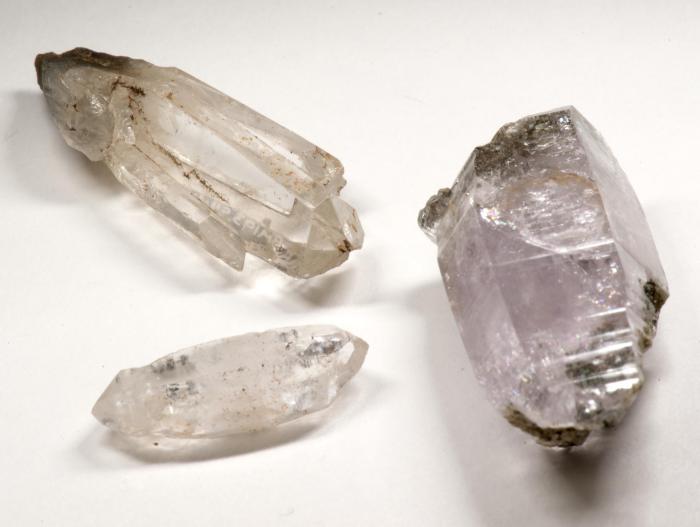Crystals — Cukiilat

Quartz is one of the most common materials on earth. Made of silicon dioxide (SiO2), this hard mineral occurs in a wide variety of forms and colors and is a major constituent of many igneous and sedimentary rocks. One form of quartz is the translucent, prism-shaped quartz crystal. These stones typically grow in hot, wet environments under pressure. Here, super-heated water dissolves silica molecules from surrounding rocks. As the water cools, the molecules aggregate and crystalize. As long as favorable conditions persist, quartz crystals can continue to grow. For this reason, they occur in many sizes.
Archaeologists find quartz crystals in late prehistoric Alutiiq settlements. Although the source of these crystals is not known, they are a common find. Most are small, less than 4 cm long, and unmodified. What were they used for? Some people think quartz crystals were decorative items, added to jewelry or clothing. At the Kumluk Site in Old Harbor, archaeologists found quartz crystals alongside slate pendants.
Other people suggest that crystals were charms—items that brought luck or spiritual assistance. Over their lives, Alutiiq hunters collected small talismans that they stored in special boxes. Perhaps quartz crystals were among these special finds. Interestingly, a shaman’s rattle collected on Kodiak has a quartz crystal inside of it. The crystal is wrapped in sinew with a sliver of wood, a piece of mica, and hair clippings. Did this bundle help the shaman draw spirits near?
Whatever their origin and use, these stones are a time marker. Where found they tell archaeologists that deposits date to between about 600 and 200 years old.
